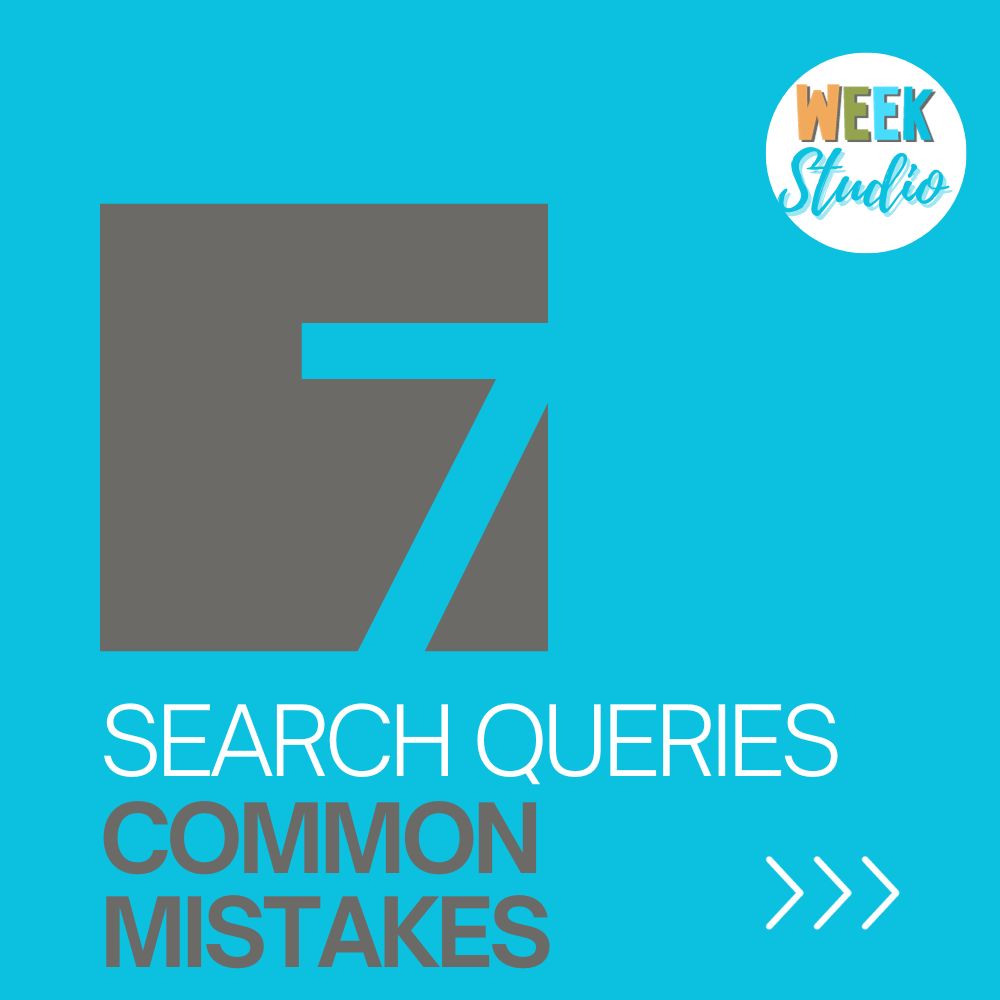In the vast realm of the digital landscape, where information is at our fingertips, the art of discovery begins with a simple action – the search query. As search engines have become an integral part of our daily lives, understanding the dynamics of these queries has never been more crucial for anyone navigating the online space.
Why are search queries so important, and what role do they play in the intricate world of SEO? Join me on a journey to unravel the significance of top search queries, explore their diverse types, and delve into the tools and strategies to optimize content effectively. Whether you’re a seasoned SEO expert or just dipping your toes into the realm of digital marketing, understanding the essence of search queries is a key ingredient for online success. So, let’s embark on this exploration together, demystifying the language of the digital seeker.
Significance of Search Queries in SEO

The landscape of search engine optimization (SEO) is built upon the foundation of understanding and catering to user intent. At the heart of this understanding lies the significance of search queries. These queries serve as windows into the minds of users, offering valuable insights into what they are seeking and how they phrase their requests.
Role in Determining User Intent
When a user inputs a search query, they are essentially communicating their intent to the search engine. Whether they are looking for information, intending to make a purchase, or simply navigating to a specific website, the search query becomes a linguistic bridge between the user and the vast expanse of the internet.
To optimize content effectively, SEO professionals need to decipher these queries and align their strategies with the predominant user intent. Are users seeking answers to a specific question? Are they looking for a product or service? The ability to answer these questions lies in the careful analysis of top search queries.
Impact on Website Visibility
Search engines, with their intricate algorithms, use search queries as a basis for ranking web pages. Websites that effectively address the queries users pose are rewarded with higher visibility in search results. This visibility, often in the form of a coveted spot on the first page of search engine results, translates into increased traffic and potential conversions.
For businesses and content creators alike, the visibility of their online presence is directly tied to their understanding of the top search queries relevant to their niche. It’s not merely about having content; it’s about having the right content that resonates with the queries users are typing into search engines.
In the next section, we’ll explore the different types of search queries, each offering a unique perspective into the diverse needs and intents of online users.
Types of Search Queries

The digital landscape is a dynamic ecosystem where users express their needs and desires through a myriad of search queries. Understanding the distinct types of search queries is akin to deciphering the language of online exploration. Let’s unravel the three primary categories: Navigational, Informational, and Transactional queries.
Navigational Queries
Navigational queries indicate that users are on a quest to reach a specific website. These queries often involve the name of the website or a brand. Users using navigational queries typically have a destination in mind and are seeking the most direct route to reach it. As an SEO practitioner, optimizing for navigational queries involves ensuring that your website is easily discoverable when users are looking for it explicitly.
Informational Queries
Informational queries reflect the user’s quest for knowledge. These queries are often open-ended and can range from “how-to” questions to seeking general information on a particular topic. As content creators, tailoring your material to address informational queries involves providing comprehensive and valuable insights that answer the user’s questions or fulfill their need for information.
Transactional Queries
Transactional queries signal an intent to perform a specific action, often involving a purchase or transaction. Users making transactional queries are further along the conversion funnel and are ready to engage in a specific activity, such as buying a product, signing up for a service, or making a reservation. Optimizing for transactional queries requires a focus on clear calls-to-action and ensuring a smooth user journey towards conversion.
Understanding the nuances of these query types allows SEO professionals to craft strategies that resonate with user intent. In the upcoming sections, we’ll delve into how search engines interpret these queries and the tools available for analyzing top search queries effectively. Stay tuned!
How Search Engines Interpret Queries?

In the intricate dance between users and search engines, the ability of search engines to interpret queries accurately is paramount. The evolution of search engine algorithms has transformed the way queries are understood, moving beyond mere keyword matching to a more sophisticated analysis of user intent and context.
Importance of Context
Search engines don’t just process keywords; they aim to comprehend the broader context of a user’s query. Understanding context involves considering the user’s search history, geographical location, and the device they are using. This holistic approach enables search engines to provide more personalized and relevant results.
For SEO professionals, this means that optimizing content goes beyond incorporating relevant keywords. It involves creating content that aligns with the broader context of what users are seeking. Contextual relevance not only enhances the user experience but also signals to search engines that a particular piece of content is a valuable resource for a given query.
Evolving Algorithms
As technology advances, search engines become more adept at understanding the nuances of human language. This evolution includes the incorporation of machine learning and artificial intelligence, allowing search engines to adapt to changing user behaviors and preferences.
Staying abreast of these algorithmic changes is crucial for SEO practitioners. It means adapting strategies to align with the evolving landscape of search engine interpretation. What worked yesterday may not work tomorrow, making flexibility and continuous learning key elements of a successful SEO approach.
In the following sections, we’ll explore the tools available for analyzing top search queries and delve into the practical aspects of optimizing content to align with these ever-evolving interpretations. Join me as we navigate the dynamic world of SEO strategy.
Tools for Analyzing Top Search Queries

To navigate the complex realm of search queries, SEO professionals rely on an arsenal of tools that provide insights, analytics, and a deeper understanding of user behavior. Let’s explore some of the key tools that empower digital marketers to analyze and optimize for top search queries effectively.
Google Analytics
Google Analytics stands as a cornerstone for website analytics, offering a comprehensive suite of tools to track and analyze user activity. Within Google Analytics, the “Search Queries” section provides valuable data on the terms users enter into search engines to discover your site. This information allows SEO practitioners to identify the top-performing queries, measure organic search traffic, and assess the effectiveness of their content.
Google Search Console
Google Search Console complements Google Analytics by offering specific insights into how your site performs in Google’s search results. The “Performance” report within Google Search Console provides a detailed breakdown of queries, clicks, impressions, and average click-through rates. This data is invaluable for refining your SEO strategy, identifying opportunities for improvement, and ensuring your content aligns with user intent.
Third-Party SEO Tools
Beyond Google’s own tools, a plethora of third-party SEO tools exists to offer deeper insights and analytics. Tools like SEMrush, Ahrefs, and Moz provide robust features, including keyword analysis, competitor research, and trend tracking. These tools not only help identify top search queries but also enable SEO professionals to assess the competitive landscape, uncover new keyword opportunities, and refine their content strategies accordingly.
As we venture further, we’ll explore the intricacies of optimizing content for top search queries. From keyword research to creating valuable content, these strategies are essential for ensuring your digital presence aligns seamlessly with the queries users pose to search engines. Join me as we dive into the practical aspects of SEO optimization.
Optimizing Content for Top Search Queries

The art of optimization in the digital realm revolves around the seamless integration of user intent and relevant content. To effectively optimize for top search queries, SEO professionals employ a strategic blend of keyword research, content creation, and user experience enhancement.
Keyword Research
At the core of optimizing content lies the meticulous process of keyword research. SEO practitioners delve into the vast landscape of potential keywords to identify those that align most closely with their content and target audience. Tools like Google Keyword Planner, SEMrush, and Ahrefs aid in this discovery process.
Understanding the search volume, competition, and relevance of keywords is crucial. It’s not just about ranking for high-volume keywords but also about addressing the specific queries users are entering. Long-tail keywords, in particular, offer an opportunity to capture highly targeted traffic by addressing more specific user needs.
Creating Relevant and Valuable Content
Keywords form the foundation, but content is the building itself. Crafting content that not only incorporates target keywords but also provides genuine value to the user is paramount. Search engines increasingly prioritize content that comprehensively addresses user intent and provides a positive user experience.
Consider the user’s journey from the initial query to the information or solution they seek. Structuring content in a logical and user-friendly manner, incorporating multimedia elements, and ensuring readability are all essential aspects of content creation. The goal is not just to attract visitors but to engage and fulfill their needs.
In the next sections, we’ll explore the dynamics of long-tail vs. short-tail queries, common mistakes in handling search queries, and the impact of voice search on SEO. These aspects contribute to a holistic understanding of optimizing content for the diverse spectrum of user queries. Stay tuned for more insights into the world of SEO optimization.
Long-Tail vs. Short-Tail Queries

In the dynamic landscape of search queries, the distinction between long-tail and short-tail queries plays a pivotal role in shaping content strategy. Understanding the nuances between these two types of queries is essential for crafting a well-rounded SEO approach.
Differences and Advantages
- Short-Tail Queries: These are typically brief, often one or two words, and are broad in scope. Examples include “shoes” or “digital marketing.” While they may generate high search volumes, short-tail queries are highly competitive, making it challenging to rank at the top.
- Long-Tail Queries: These queries are more specific and usually consist of three or more words. Examples include “best running shoes for flat feet” or “digital marketing strategies for startups.” Long-tail queries may have lower search volumes, but they offer a unique advantage—they reflect a higher level of user intent. Users entering long-tail queries are often closer to making a decision or seeking detailed information.
Balancing Content Strategy
Striking the right balance between optimizing for short-tail and long-tail queries is a key consideration. Short-tail queries can attract a broad audience, but they require a robust strategy to compete with other high-authority websites. Long-tail queries, while less competitive, can bring in highly targeted traffic.
A holistic content strategy often involves a combination of both. Short-tail queries may attract a larger audience, while long-tail queries allow for a more targeted and personalized approach. As we delve deeper, we’ll uncover common mistakes in handling search queries and explore the intricacies of adapting to the ever-evolving landscape of SEO. Join me on this journey through the diverse facets of content optimization.
Common Mistakes in Handling Search Queries

While navigating the intricate world of search queries, it’s crucial to be aware of common pitfalls that can hinder the effectiveness of SEO strategies. Steering clear of these mistakes ensures a more robust approach to optimizing content and enhancing overall visibility.
Ignoring User Intent
One of the cardinal sins in SEO is overlooking the underlying intent behind a search query. The focus should not solely be on ranking for specific keywords but on understanding what users are truly seeking. User intent varies—some may be looking for information, others for products, and some may be ready to make a transaction. Tailoring content to align with these diverse intents is key for successful optimization.
Overlooking Seasonal Variations
Search behavior experiences fluctuations based on seasons, trends, and events. Failing to account for these variations can lead to missed opportunities. For instance, a product might see a surge in searches during holidays or specific seasons. By adjusting content and marketing strategies to accommodate these shifts, businesses can capitalize on heightened user interest.
As we progress, we’ll explore the impact of voice search on search queries and delve into the significance of localized search queries for businesses targeting specific geographic regions. These insights contribute to a comprehensive understanding of the ever-changing dynamics of SEO. Stay tuned for more tips and strategies to refine your approach to search query optimization.
The Impact of Voice Search on Search Queries

The rise of voice-activated devices has ushered in a new era in the way users interact with search engines. Voice search has become increasingly prevalent, and its impact on search queries is reshaping the SEO landscape.
Growing Trend
With the proliferation of virtual assistants like Siri, Google Assistant, and Alexa, users are now conducting searches using natural, conversational language. Voice search queries tend to be longer and more akin to spoken language than traditional typed searches. Understanding and optimizing for these voice queries is crucial for staying ahead in the SEO game.
Adjusting Content for Voice Search
Optimizing for voice search involves a shift in focus. Content needs to be structured to answer questions concisely and conversationally. Consideration should be given to the use of natural language, and content should aim to address the specific questions users might pose verbally.
Featured snippets, which often serve as the spoken response for voice search queries, become particularly valuable. Structuring content to secure these coveted snippets requires a focus on providing clear and concise answers to common questions within your niche.
In the following sections, we’ll explore the significance of localized search queries for businesses targeting specific geographic regions. Additionally, we’ll discuss the importance of monitoring and adapting to changing search trends, ensuring that your SEO strategies remain agile and effective in the face of evolving user behaviors. Join me as we unravel the multifaceted world of search query optimization.
Localized Search Queries

For businesses with a physical presence or those targeting specific geographic regions, the world of localized search queries holds immense significance. Understanding and optimizing for these queries is pivotal for attracting local customers and enhancing visibility within a specific location.
Importance for Local Businesses
Local search queries often involve location-specific terms such as city names, neighborhoods, or phrases like “near me.” When users are seeking products or services in their vicinity, search engines prioritize results that match their location. For local businesses, appearing in these local search results can be a game-changer, driving foot traffic and conversions.
Optimizing for Local Search
Optimizing for localized search involves several key strategies:
- Google My Business: Ensure your business is listed and optimized on Google My Business. This platform not only provides essential information to potential customers but also plays a significant role in local search rankings.
- Local Keywords: This includes your website’s meta descriptions, titles, and relevant on-page content. Think about the terms locals would use to find businesses like yours.
- Local Citations: Ensure your business information (name, address, phone number) is consistent across online directories and platforms. This consistency reinforces your business’s credibility and improves local search rankings.
In the upcoming sections, we’ll discuss the importance of monitoring and adapting to changing search trends. The digital landscape is dynamic, and staying attuned to emerging trends ensures that your SEO strategies remain effective and adaptive. Join me as we explore the final aspects of our journey through the world of search query optimization.
Monitoring and Adapting to Changing Search Trends

The digital landscape is akin to a constantly shifting terrain, with search trends evolving in response to technological advancements, user behaviors, and algorithmic updates. Staying on the cutting edge of these changes is crucial for maintaining the effectiveness of your SEO strategies.
Staying Updated
Regularly monitoring industry news, algorithm updates, and changes in user behavior is fundamental to staying updated. Search engines continuously refine their algorithms, and understanding these adjustments is key to adapting your optimization strategies accordingly. Subscribe to reputable SEO blogs, participate in industry forums, and engage with the SEO community to stay informed about the latest developments.
Flexibility in SEO Strategies
Adaptability is a hallmark of successful SEO practitioners. As search trends shift, your strategies need to evolve. This might involve tweaking your keyword targeting, adjusting content structures, or embracing emerging technologies such as video SEO or mobile optimization. Flexibility allows you to proactively respond to changes rather than reactively trying to catch up.
In the final stretch of our exploration, we’ll wrap up our insights into the importance of understanding top search queries. The world of SEO is dynamic, and while it requires a strategic foundation, it equally demands continuous learning and adjustment. Join me as we conclude our journey and reflect on the key takeaways from our exploration of search query optimization.
Conclusion
In the vast expanse of the digital realm, where information is the currency and visibility is the prize, understanding and optimizing for top search queries stand as pillars of success. From the intricacies of user intent to the nuances of localized search, our journey through the world of search query optimization has been both enlightening and empowering.
We’ve navigated the terrain of SEO strategy, uncovering the significance of keywords, the impact of voice search, and the critical role of adapting to changing trends. The art of optimization is not static; it’s a dynamic dance with algorithms, user behaviors, and ever-evolving technologies.
As you embark on your own SEO endeavors, remember the power of context in interpreting queries, the strategic balance between short-tail and long-tail queries, and the importance of staying attuned to the pulse of localized search.
In this journey, flexibility is your ally, and continuous learning is your compass. The landscape may shift, but armed with the knowledge and strategies uncovered here, you’re well-equipped to navigate the ever-changing currents of search engine optimization.
Thank you for joining me on this exploration of top search queries. May your digital endeavors be marked by visibility, relevance, and a deep understanding of the language spoken by the seekers of the online realm. Safe travels in your SEO adventures!
FAQs
- How often should I update my content to align with changing search trends?
Regular updates are beneficial, but the frequency depends on your industry and the pace of change. Monitor trends, and update content when there are significant shifts or when your content can be improved.
- Is it essential for small businesses to focus on localized search queries?
Absolutely. For local businesses, optimizing for localized search is crucial for attracting nearby customers. Utilize platforms like Google My Business and incorporate local keywords to enhance visibility in your community.
- Can voice search impact my website’s ranking?
Yes, voice search can influence rankings. Optimizing for voice involves providing concise, natural language answers to common queries. Featured snippets become particularly valuable in this context.
- What is the most common mistake in handling search queries?
Ignoring user intent is a prevalent mistake. Understand why users are searching, and tailor your content to fulfill their needs. Keyword relevance is vital, but it should align seamlessly with user intent.
- How can I adapt my content for both short-tail and long-tail queries?
Create a balanced content strategy. Short-tail keywords attract a broad audience, while long-tail keywords address specific user needs. Striking this balance ensures a comprehensive approach to SEO optimization.
